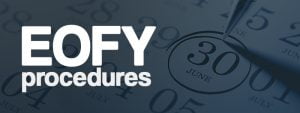Many startups fail as a result of one thing – running out of cash. Overcome this challenge through regular cash flow forecasting.
Many startup failures occur as a result of one thing – running out of cash – and a high proportion of those are simply because of poor cash management.
Robust, timely and reliable cash flow forecasting and management is therefore an essential function within any startup or high growth venture.
What is cash flow Forecasting?
cash flow forecasting is the process of understanding the timing and nature of all cash coming in and going out, and then forecasting cash needs (or surpluses) going forward. A cash deficit over a period (usually a month) is referred to as net cash “burn”, and the average burn over a period of time is referred to as your average burn rate.
A few groundrules of cash flow forecasting …
- In developing a cash flow Forecast there are a few groundrules that you should follow;
- Forecasting is an approximation, so don’t try for, or expect perfection – an error tolerance of 5% is acceptable.
- Cash amounts are clearly important, but so is the timing of cash movements – for example if it takes 30 days to collect a sale your forecast should reflect that.
- Update your forecast regularly – we recommend weekly – that way it should never stray too far from the actual cash position.
- Be conservative – it’s best to underestimate your cash position and plan accordingly, rather than being overly optimistic.
- Remember its about real cash in your Bank account so be sure to exclude all non-cash items like depreciation and accruals. If an item is in doubt its best to leave it out.
- Test your cash flow forecast assumptions against actual cash flows regularly. If your forecast strays too far from reality (say more than 5%) make sure to correct your forecast accordingly.
Constructing a cash flow Forecast
A cash flow forecast has two components – cash inflows and cash outflows.
The cash flow forecasting itself should be divided into regular (at the minimum monthly) periods and extend for a minimum 12 months – beyond this period the forecast will likely become unrealistic and unreliable.
The overall structure, for each period, is;
Opening cash balance $100,000
Add Cash inflows $2,000
Less Cash outflows $(5,000)
to give;
Closing cash balance $97,000
Cash Burn for the period $(3,000)
Cash Inflows
- Inflows are primarily made up of trade sales and should be included when the cash is received (rather than the sale date). Take into account any trade discounts or rebates.
- Future sales are estimated using plan, budget or averages, however as mentioned before its best to be conservative.
- Include investment cash flow such as interest or dividends when received.
- Include any “one off” items such as loan drawdowns or equity injections (financing cash flow).
Our suggested structure for Cash inflows;
Recurring sales $1,000 – Regular sales revenue collected including GST
One off income $250 – One off items like government grants, tax rebates
Financing $750 – Proceeds from equity raising, convertible notes, loans
to give;
Total Cash inflows $2,000
Cash Outflows (or Cash Burn)
- Start with regular cash expenses (including direct debited amounts) – these will include salaries and wages, rent, insurance, interest / lease obligations, contracted obligations and so on.
- Include taxation related costs – PAYG, Superannuation contributions and Payroll Tax.
- Cost of sale items such as costs of manufacture, freight and logistics should be related to forecast sales – often a % is used e.g. freight costs average 10% of sales.
- Include other trade payables when usually paid – often trade payables will be paid regularly weekly, fortnightly or monthly.
- Provide for GST. GST may be paid weekly, monthly, quarterly or annually so you’ll need to forecast the timing and amount.
Our suggested structure for Cash outflows;
Fixed expenses $3,000 – Wages, contractors, rent, utilities
Variable expenses $1,500 – Marketing, entertainment, legal costs
Financing $500 – Expenses from equity raising, loan interest, commissions, etc
to give;
Total Cash outflows $5,000
Note that we separate Fixed and Variable expenses – that’s because variable expenses can be managed, so for example can be reduced if cash becomes low. Whereas you are often unable to quickly reduce fixed expenses.
Working Capital planning
Many startups operate with cash deficits for extended periods before their product or service starts generating significant revenues. In the interim they need to regularly raise capital to keep funding the business.
The cash flow Forecast is critical in identifying when cash deficits are likely to occur, and when additional equity capital is needed.
- A few tips regarding equity capital raising (in terms of cash flow);
- Plan sufficient time for equity raising to be completed – it can easily take 6 months from initial planning to receiving funds.
- Take into account the costs associated with raising equity – roadshows, investor document preparation, legal costs and any placement commissions.
Regularly updating your cash flow forecast
Once you have a reliable and accurate cash flow Forecast, make sure to identify any potential cash deficits and plan accordingly. Ensure you have sources of cash available if and when needed.
Sources of cash can include a Bank Overdraft, Business Loan, Working Capital Facility, Credit Card, etc. Be aware however that establishing new lines of credit or raising equity can be time consuming, so plan for a lead time if you don’t already have an established source of cash.
If your business’ finances require more expertise at an executive level, reach out to the seasoned team at Fullstack who can help with outsourced CFO services.
Was this article helpful?
Related Posts
- Networking: what it is and how to do it
As the old saying goes, it’s not what you know but who you know—and networking…
- A guide to hiring freelancers for non-HR people
To get the best freelancers and secure an excellent ROI, you need to understand how…
- Accelerating Commercialisation – co-fund your venture up to $1 million
Enterprising startups with a prototype available can progress faster with an Accelerating Commericalisation Grant.
- Accounting Reports: the Top 3 and when to use them
Financial reports are essentially the dashboards showing how your business is tracking money-wise. We cover…

















